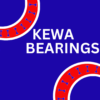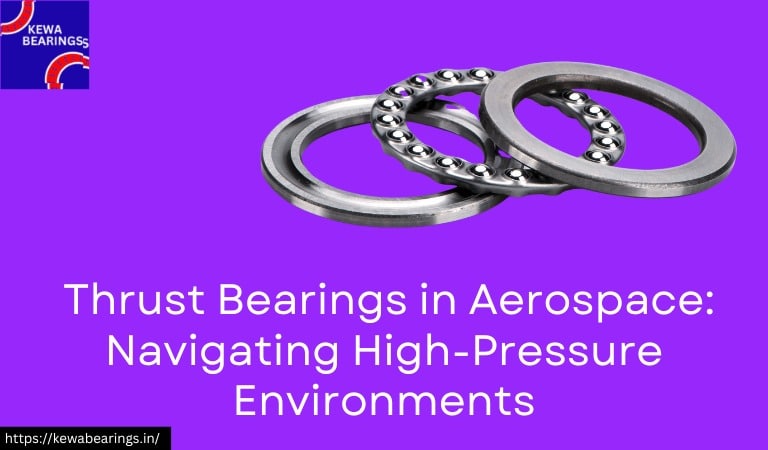When it comes to the automotive and other transportation industries, thrust bearings have always been of paramount importance. They are used in propellers, engines, centrifuges, and generators. Such a bearing allows parts that sit close together to rotate freely with significantly reduced friction. Moreover, a thrust bearing facilitates rotation around a fixed shaft or axis. But one of the most significant features of these bearings is navigating high-pressure environments. In today’s blog post, Kewa Bearings, manufacturers of the best types of ball bearings, will tell you anything and everything about these bearings in the aerospace industry.
A Sneak Peek into Thrust Bearings
A thrust bearing is a particular kind of rotary bearing designed to support axial loads and lower friction. The thrust bearings are intended to enable and aid rotation around a fixed shaft or axis, and while a machine is in motion, its rotating components move along them. Transferring thrust loads placed on the shaft and limiting axial shaft drift are two primary purposes of thrust bearings. Thrust bearings are typically positioned against a high thrust collar around a shaft. The thrust collar transfers the shaft’s axial load to the bearing. Thrust collars are usually used in pairs, one on each side of the thrust collar. Although several types of thrust bearings are available to meet the requirements of various applications, they typically consist of two washers or raceways in addition to the rolling elements. They have small metal balls all around the outside to help the rotating sections of a machine.
Types of Thrust Bearings & Their Uses in the Aerospace Industry
These bearings are capable of handling tremendous amounts of loads. As a result, they are the top priority of the aerospace industry. The different types of bearings used in the aerospace industry include ball thrust, roller thrust, fluid thrust, and magnetic bearings.
- Thrust Ball Bearings
This sits between two grooved washers inside a ring and the balls are able to move. This type of thrust bearing is useful for small axial loads. The roller thrust bearing is similar to the ball thrust bearing, however, the bearings are rollers instead of balls and they can support larger loads. There are three types of thrust ball bearings: cylindrical, tapered, and spherical. The cylindrical rollers point to the bearing’s axis; they are inexpensive but wear faster than ball thrust bearings. The tapered rollers also point to the bearing’s axis and, when used in pairs, can support axial thrust in opposite directions and assist with the radial load; they are more expensive to make. The spherical rollers are circular and asymmetrical. They support combined axial and radial loads and permit performance when axes are misaligned.
- Fluid Bearings
Unlike the thrust ball bearing types, these contain a pressurized fluid in place of ball or roller bearings. They have low friction and wear much slower than ball and roller bearings. Different types of hydrodynamic bearings that are commonly used in industrial rotating machinery include the flatland bearing, the tapered-land bearing, and the pivoted pad thrust bearing. The flatland bearing has a small load capacity and is commonly used as a bumper for momentary load reversal. The tapered-land bearing provides a higher load-carrying capability. The pivoted pad thrust bearing has the highest load capacity out of the three and is capable of adjusting to changes in operating conditions. They are used in large turbines, generators, compressors, and gearboxes. They are also used in pumps in the power generation, oil, gas, and chemical industries.
- Magnetic Thrust Bearings
Magnetic bearings contain a magnetic field in place of physical bearings. They have low drag and accommodate high speeds. There are active magnetic bearings (AMB), passive magnetic bearings, electromagnetic (EM) biased magnetic bearings, permanent magnet (PM) biased magnetic bearings, radial magnetic bearings, axial magnetic bearings, and combination radial and axial magnetic bearings. The axial magnetic bearing, or thrust bearing, produces axial support for the shaft. Like thrust ball bearing types, magnetic thrust bearings are also used in electric meters, vacuum equipment and to name a few.
Sounds worth it, right? Buy ball bearings now from Kewa Bearings.

